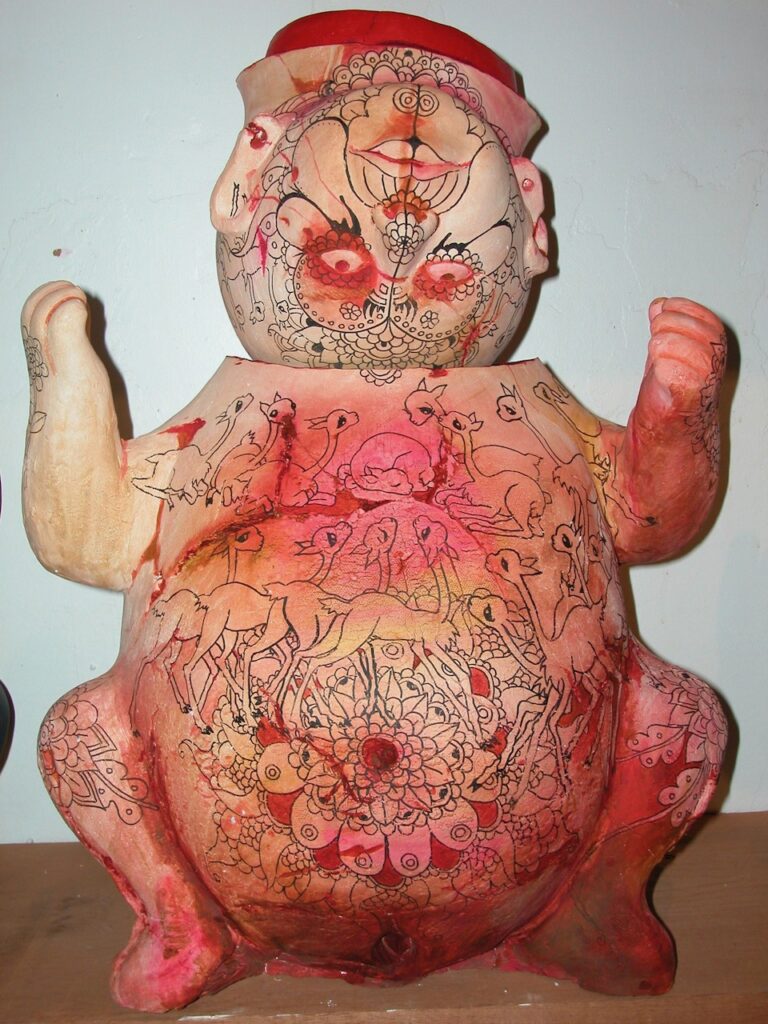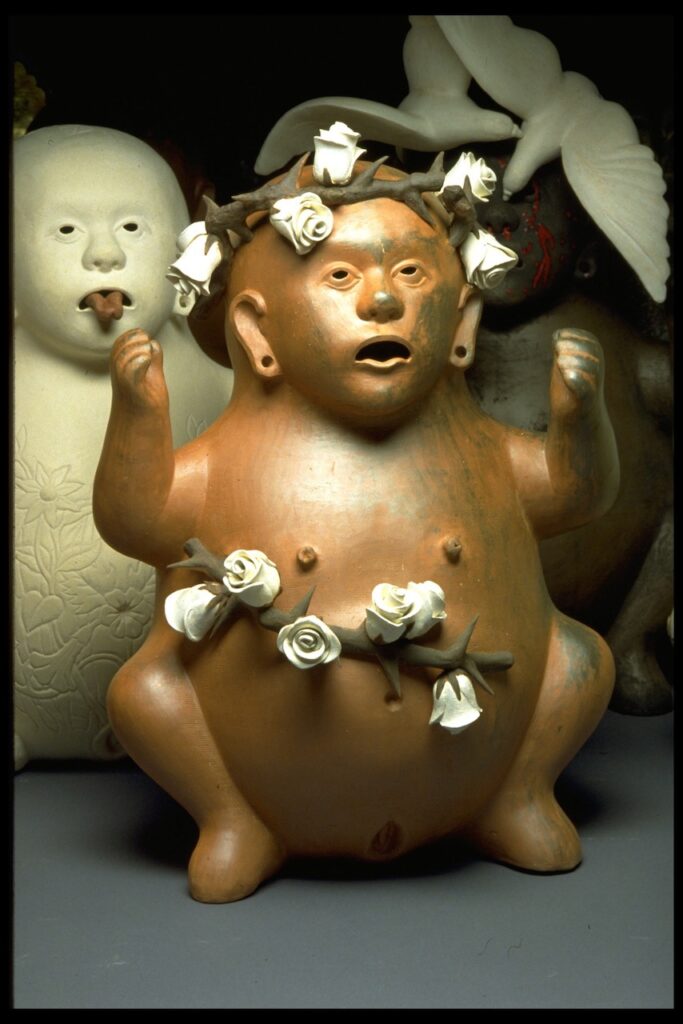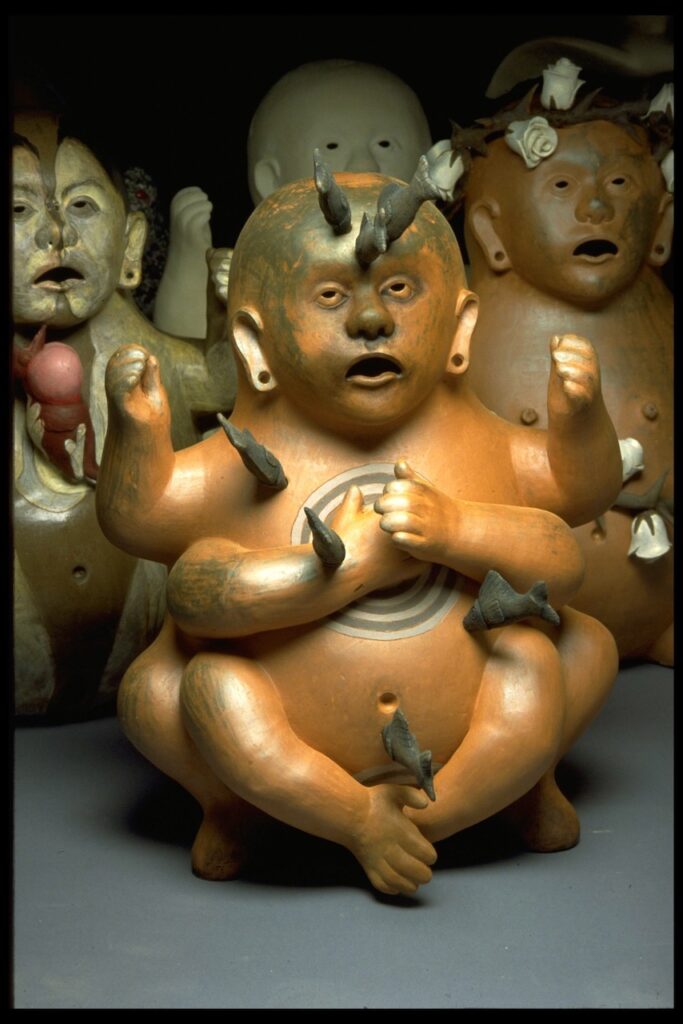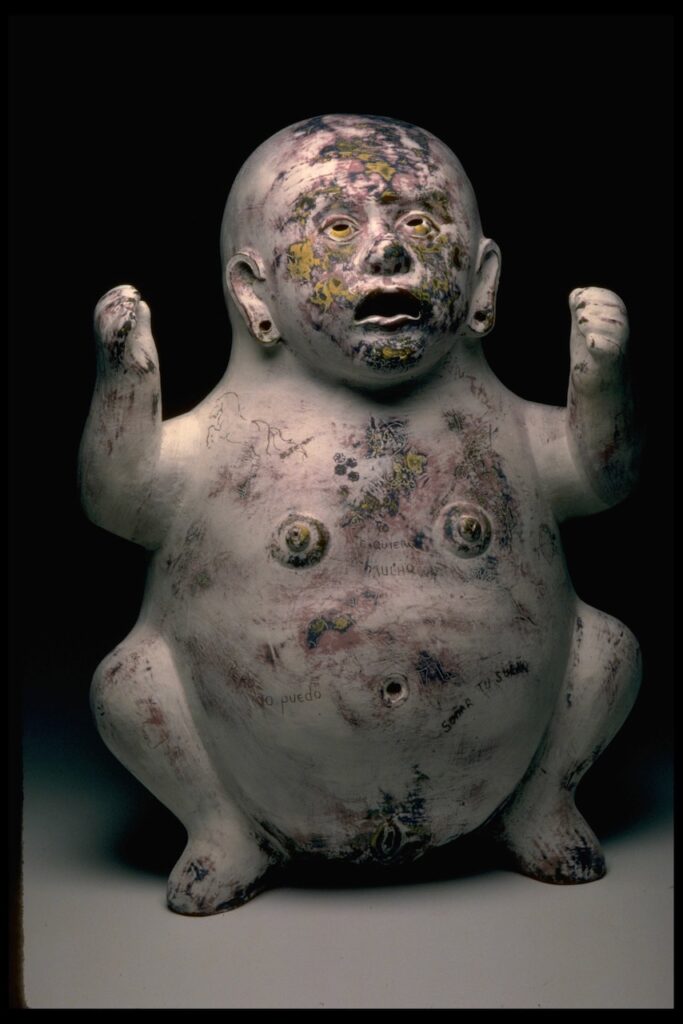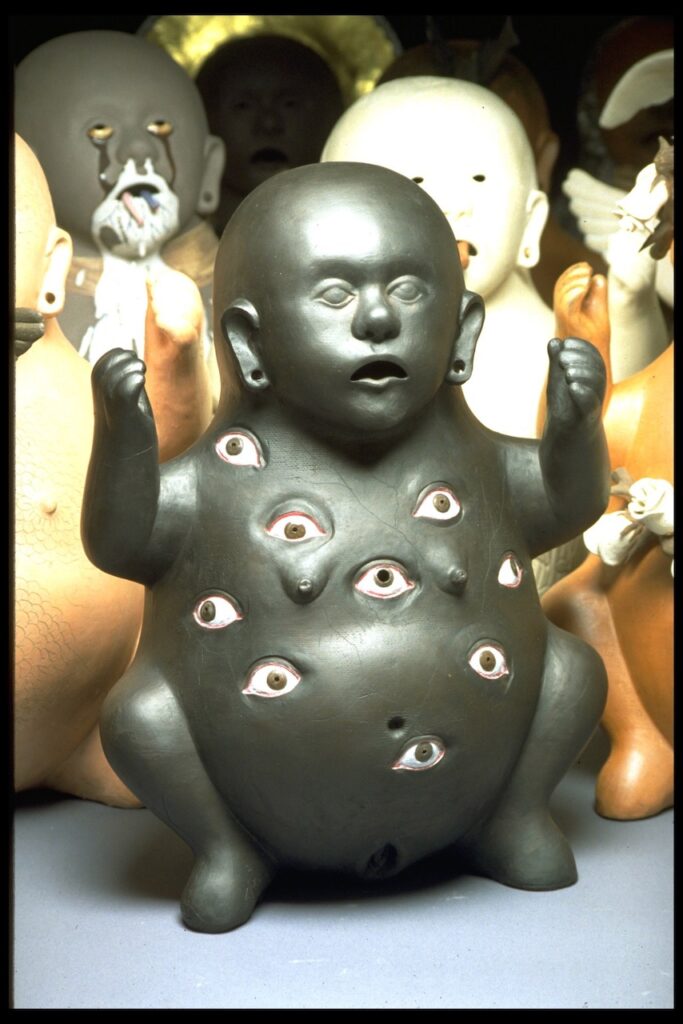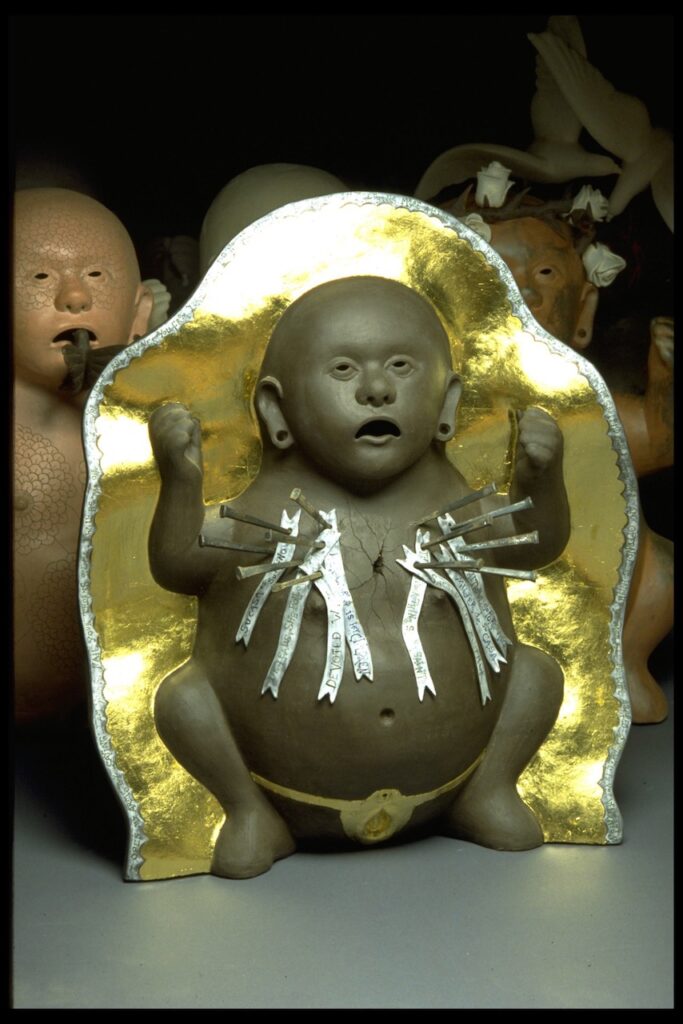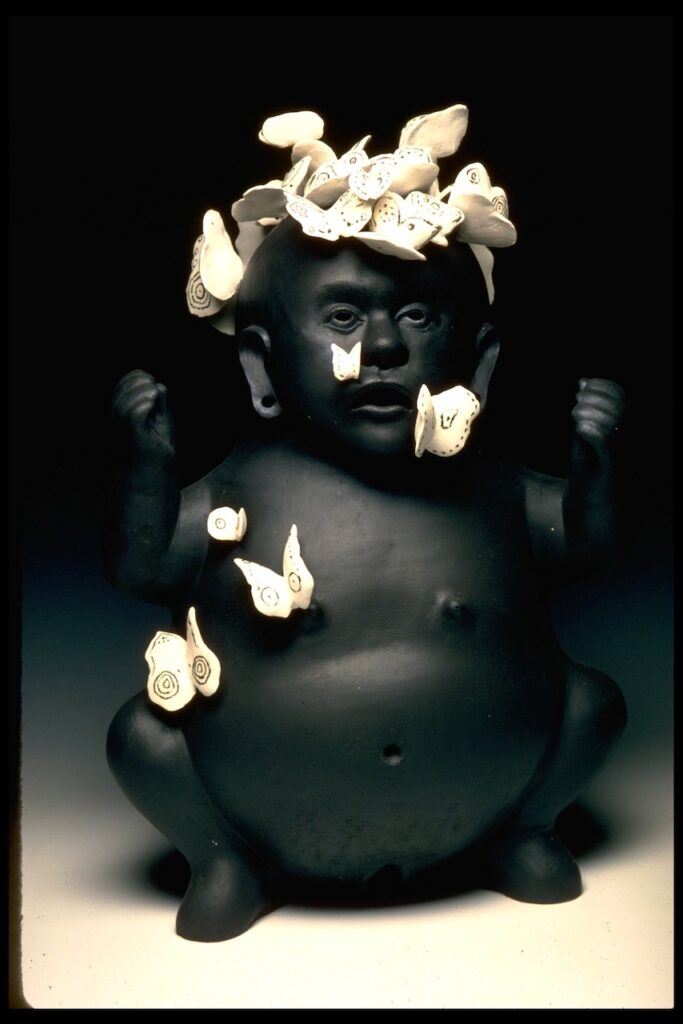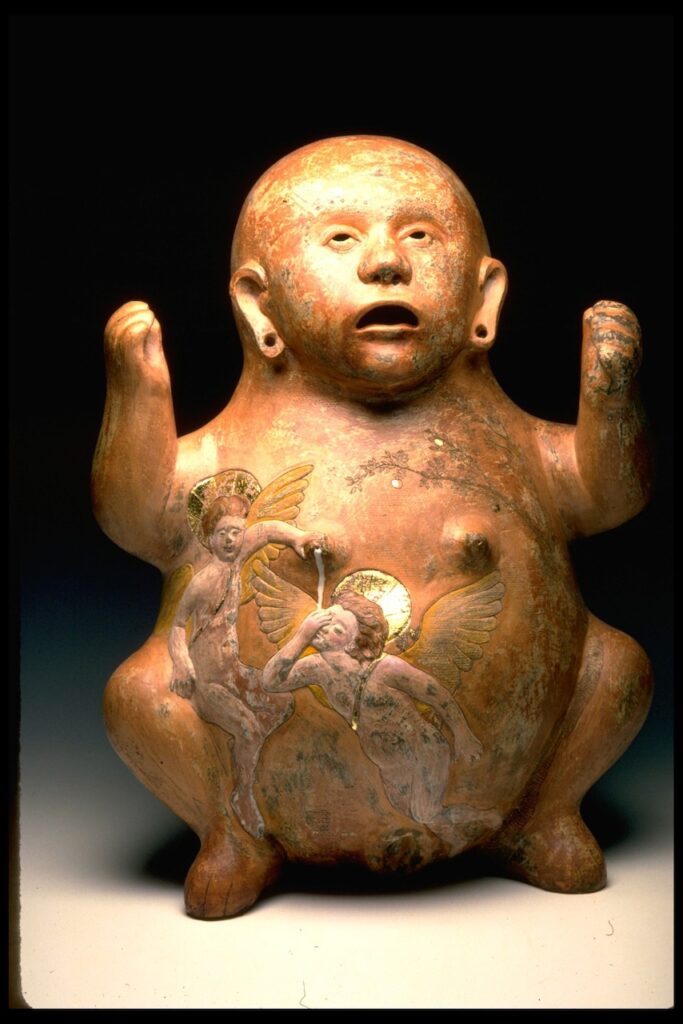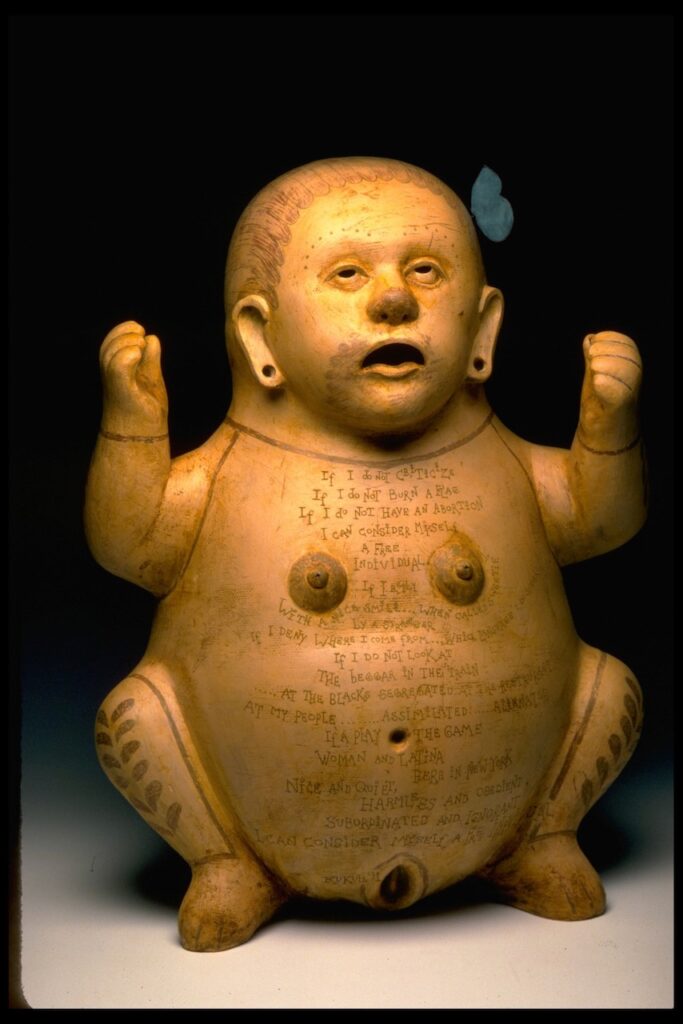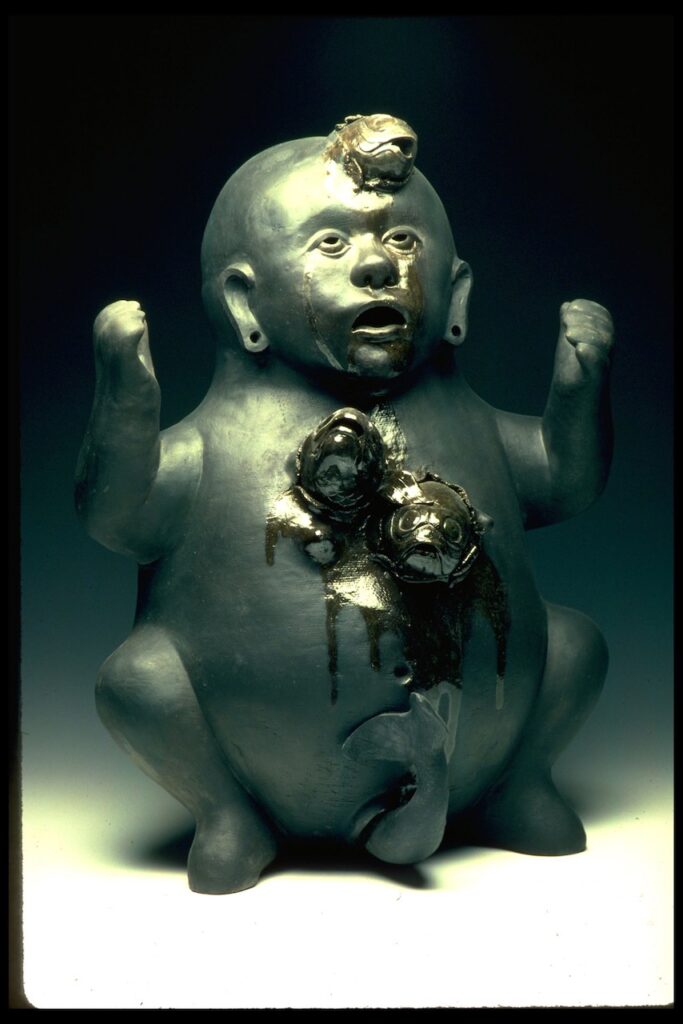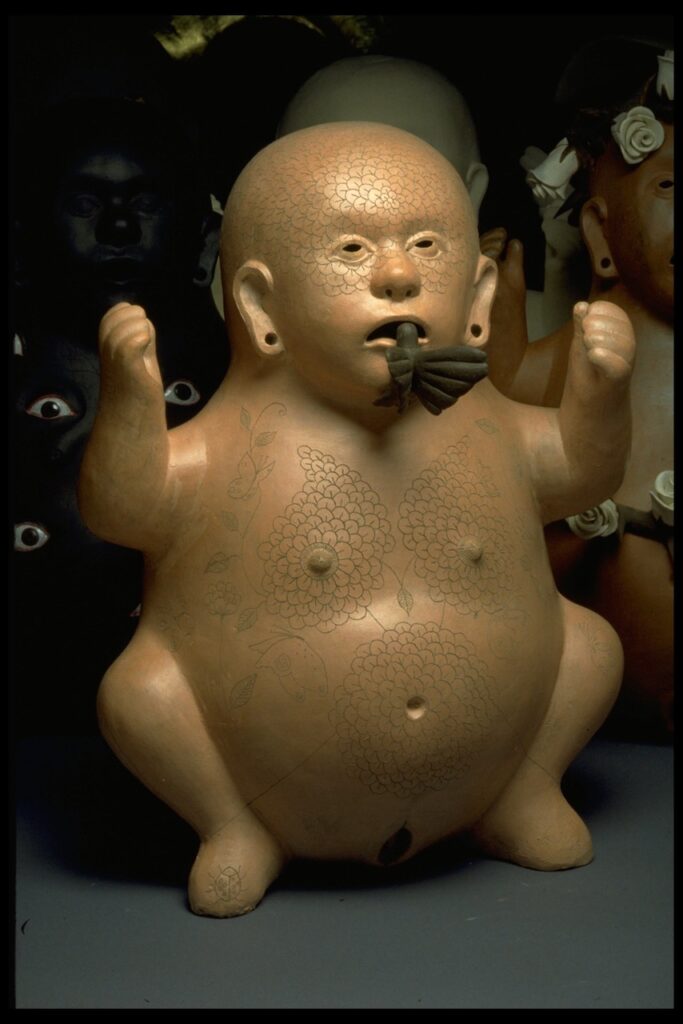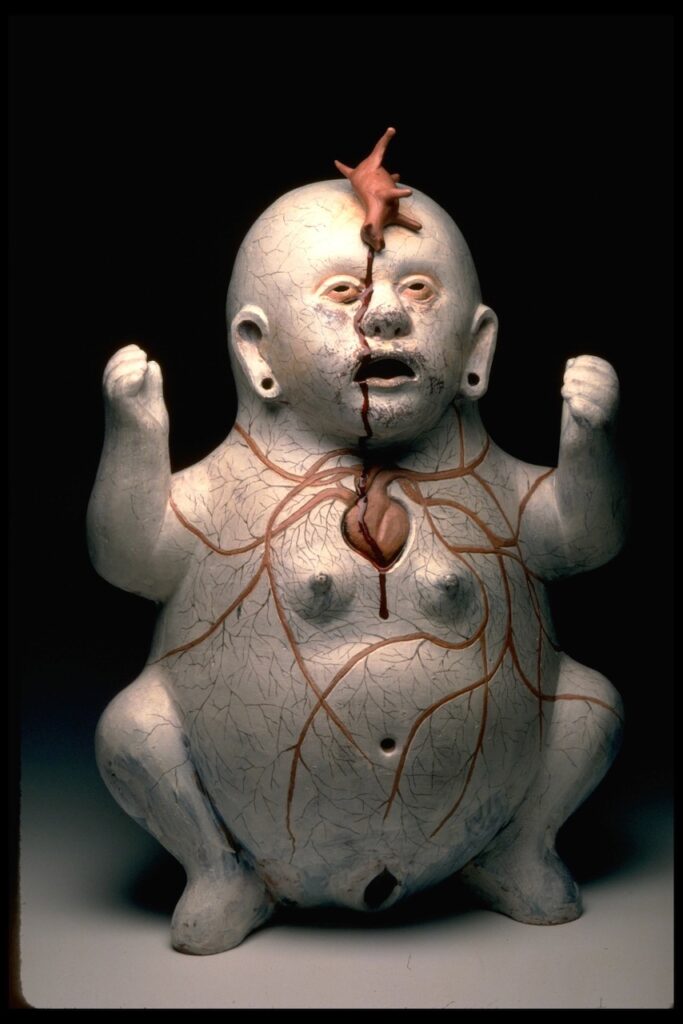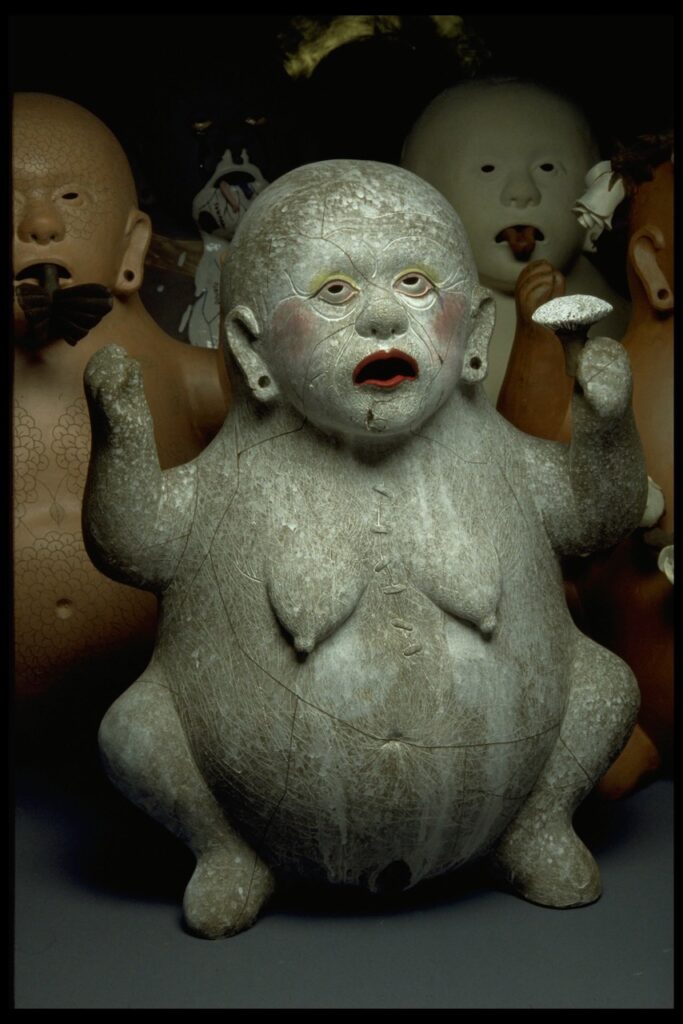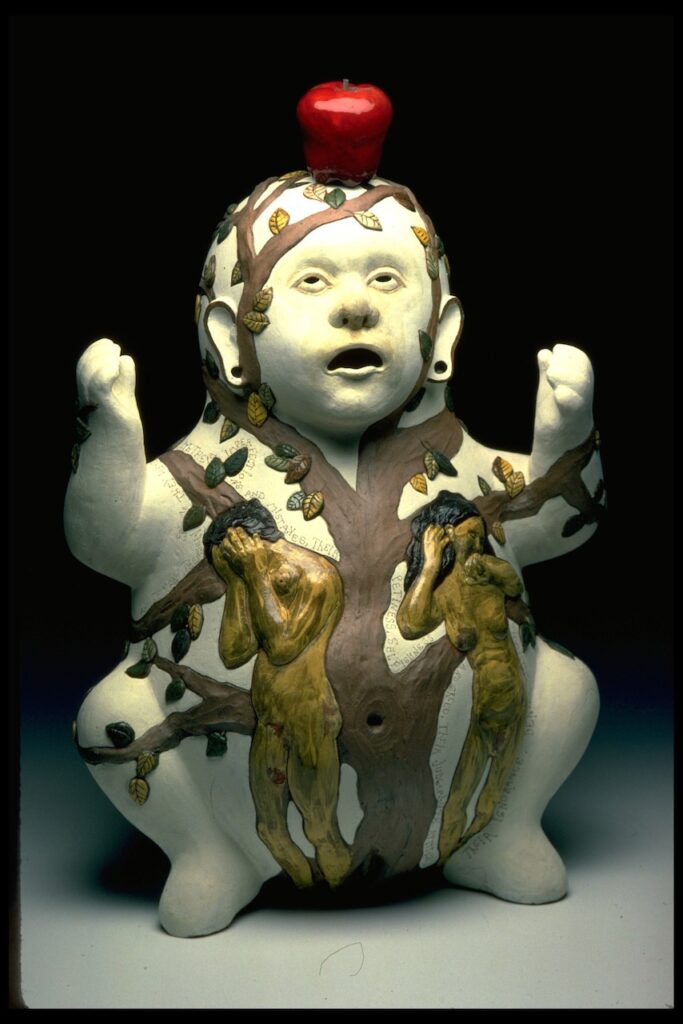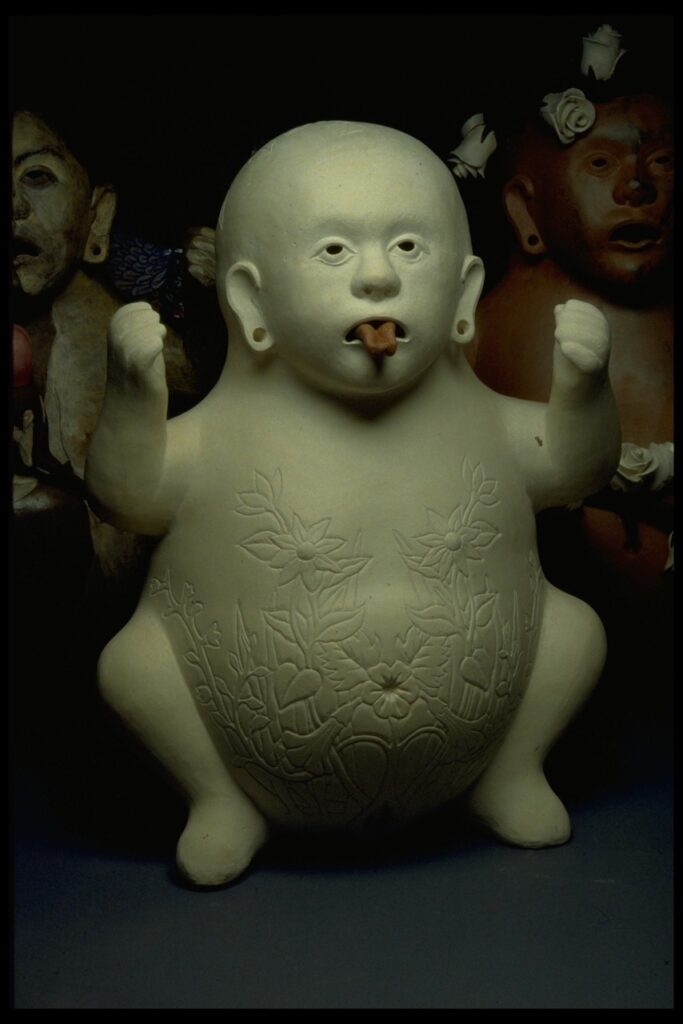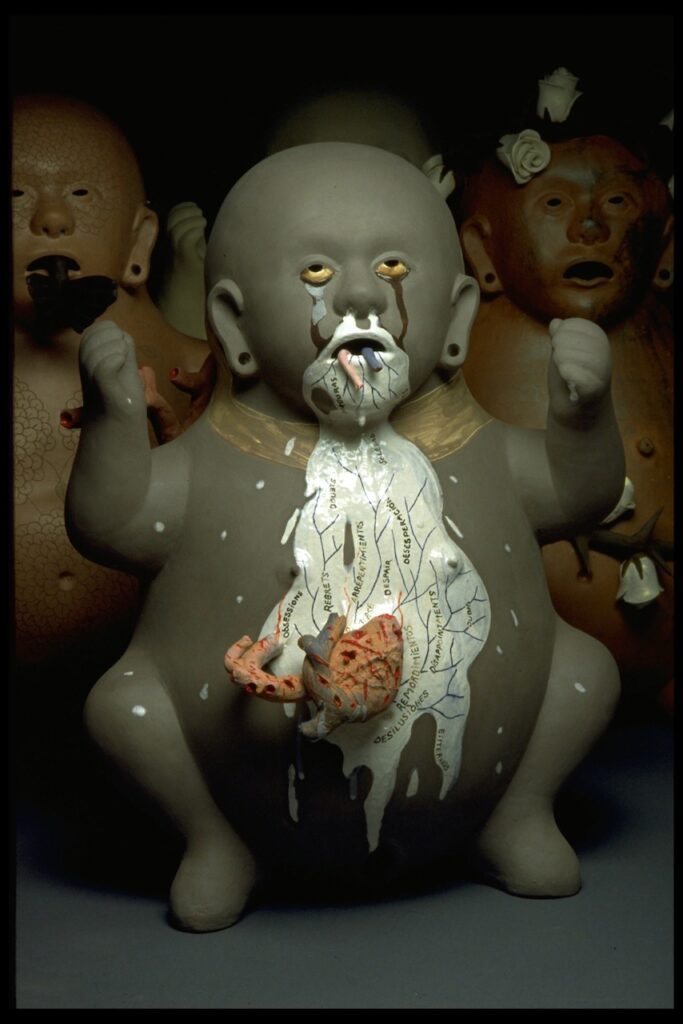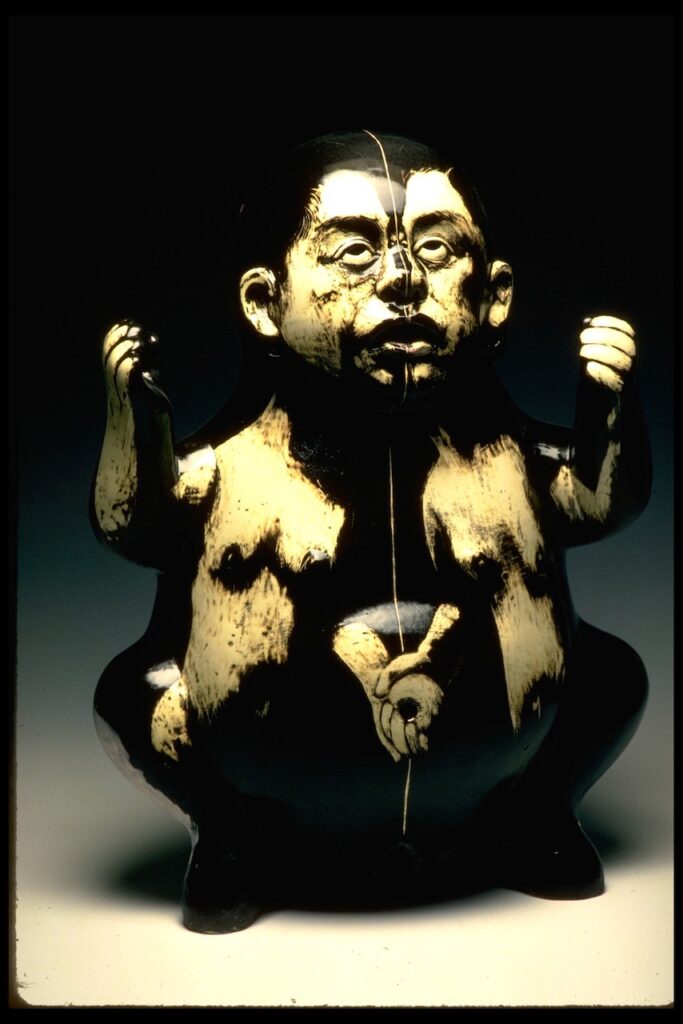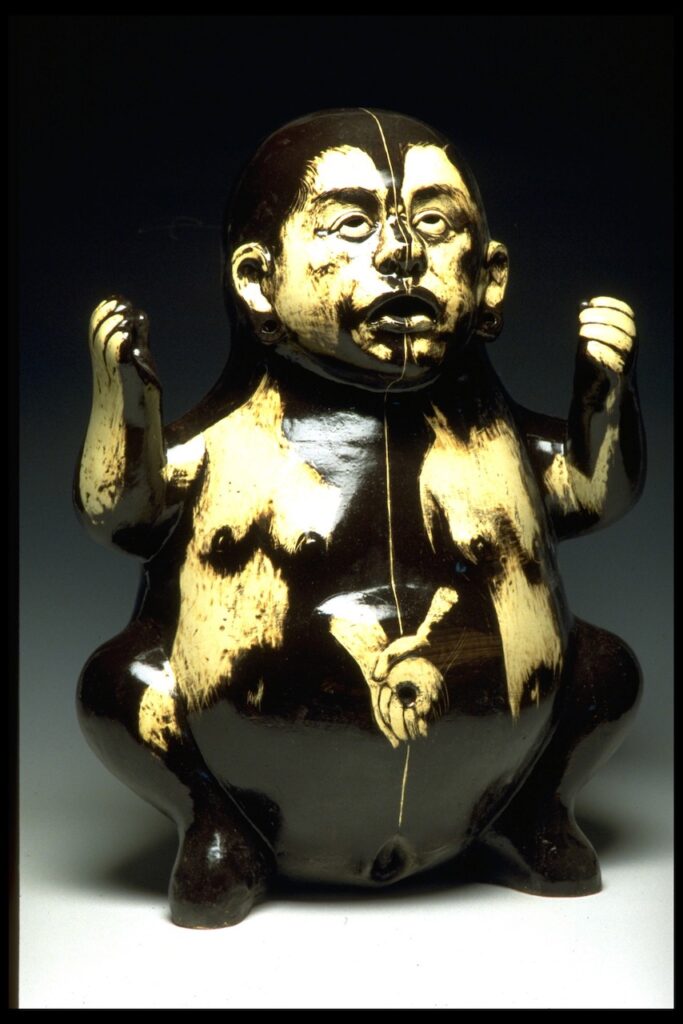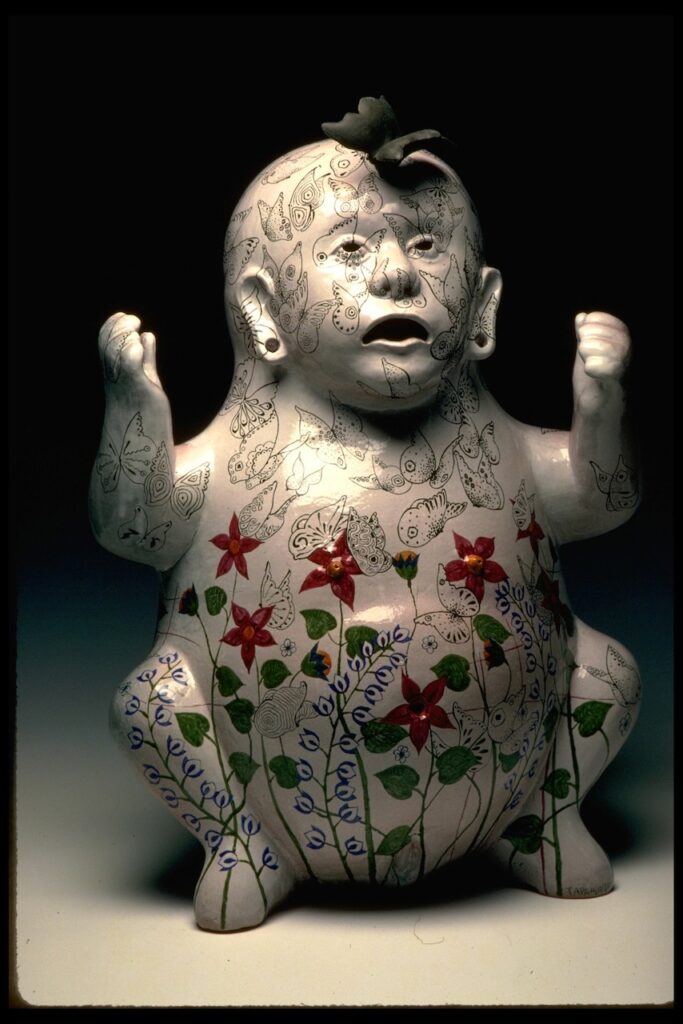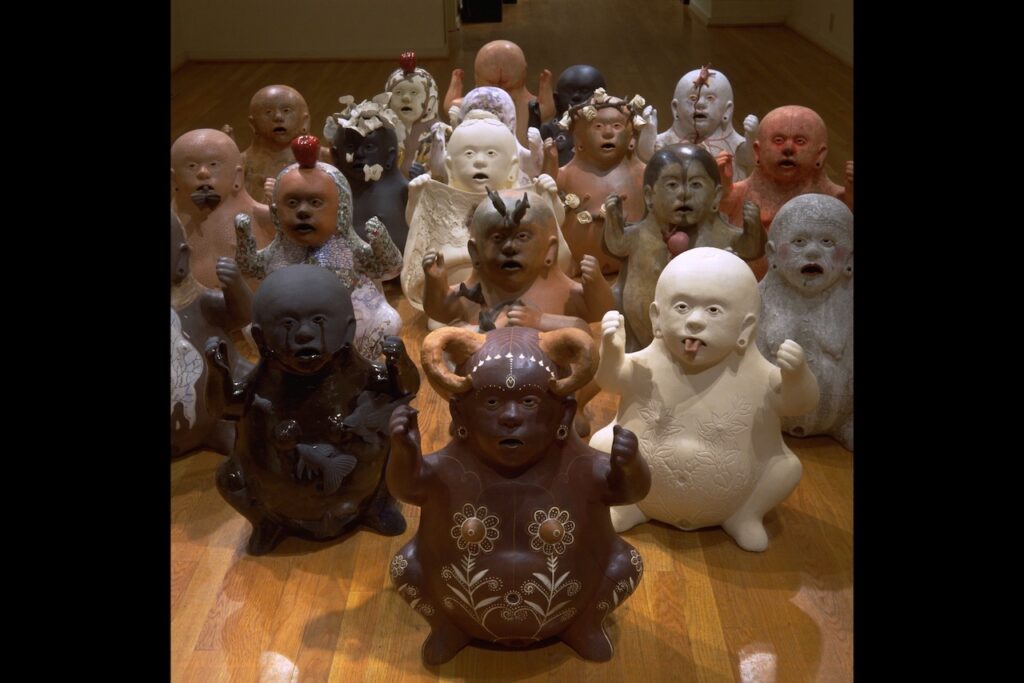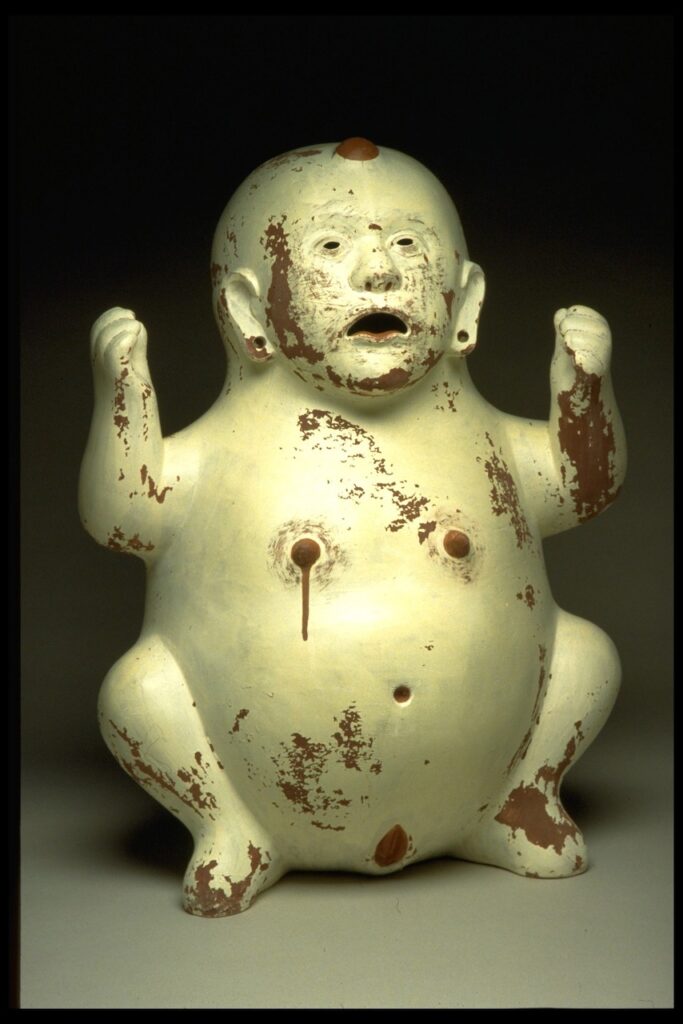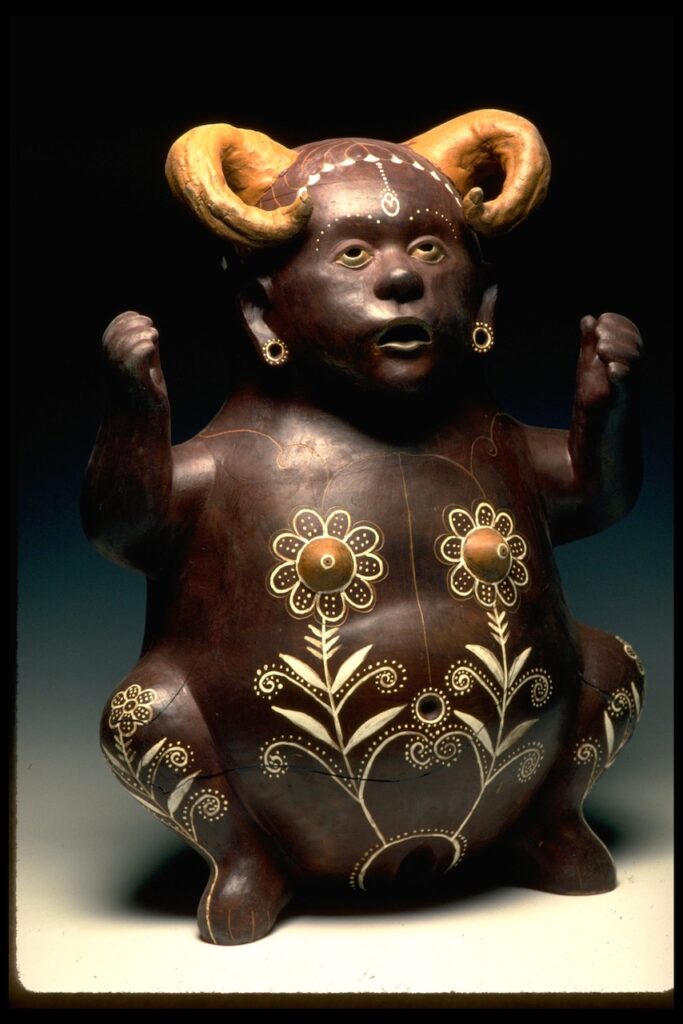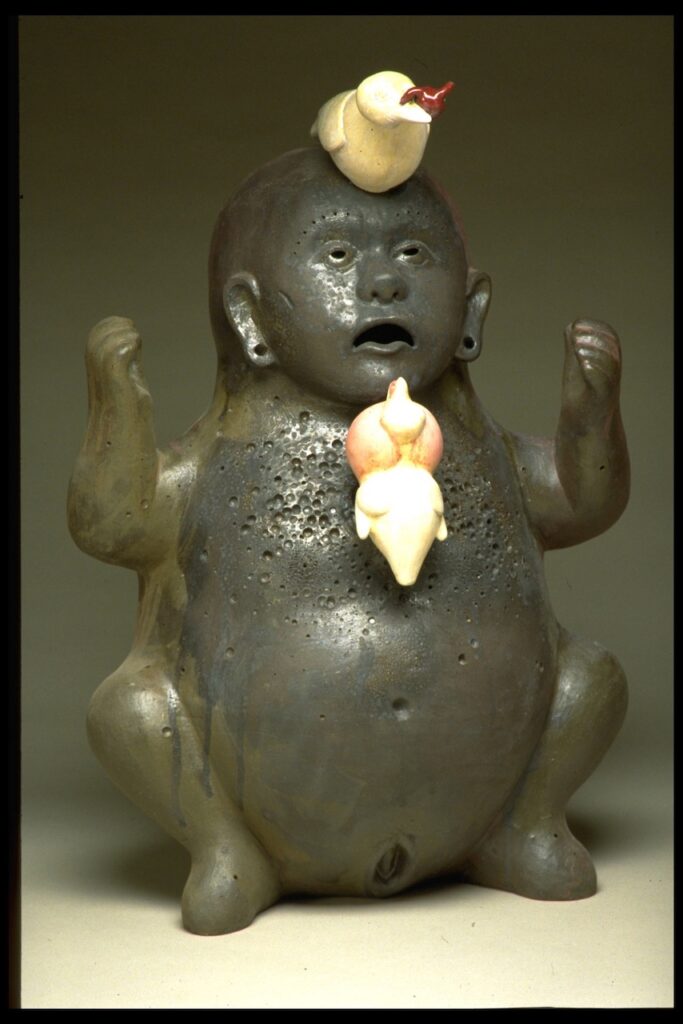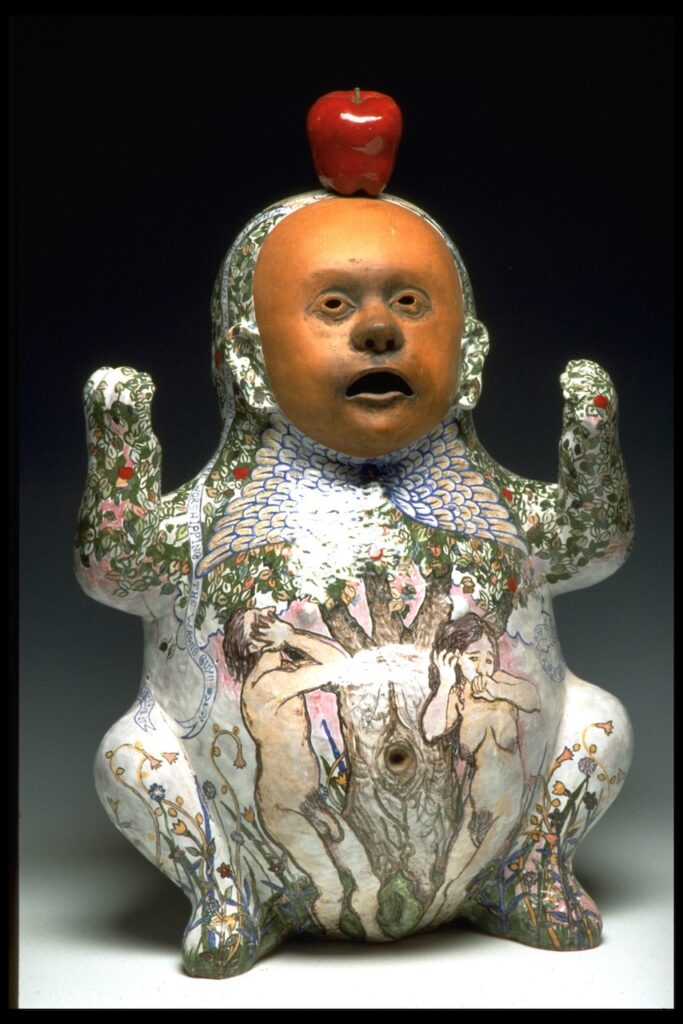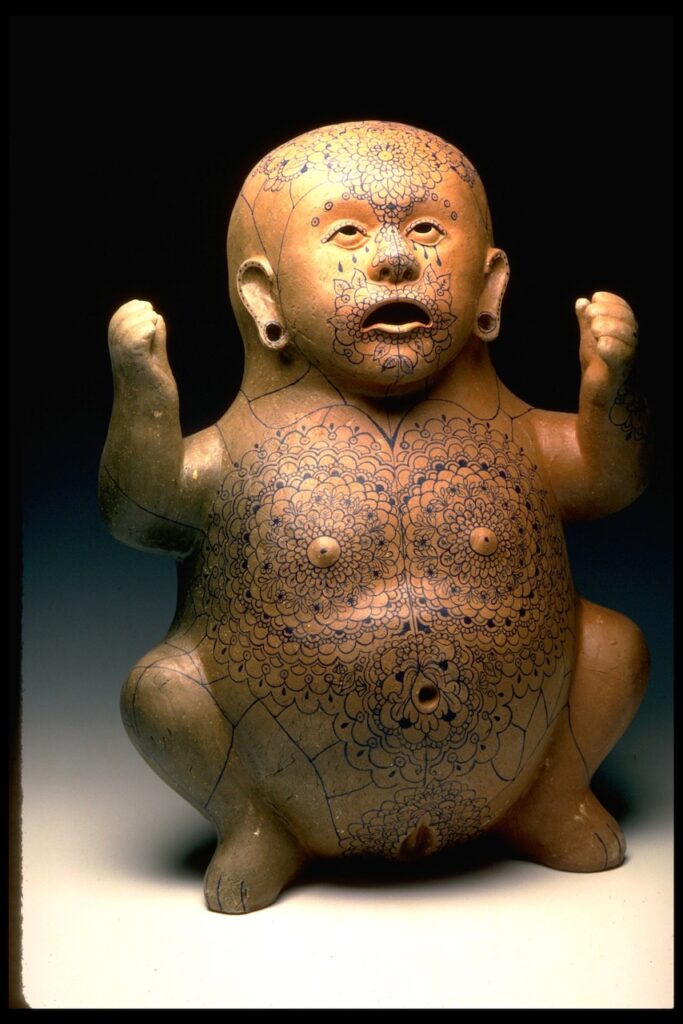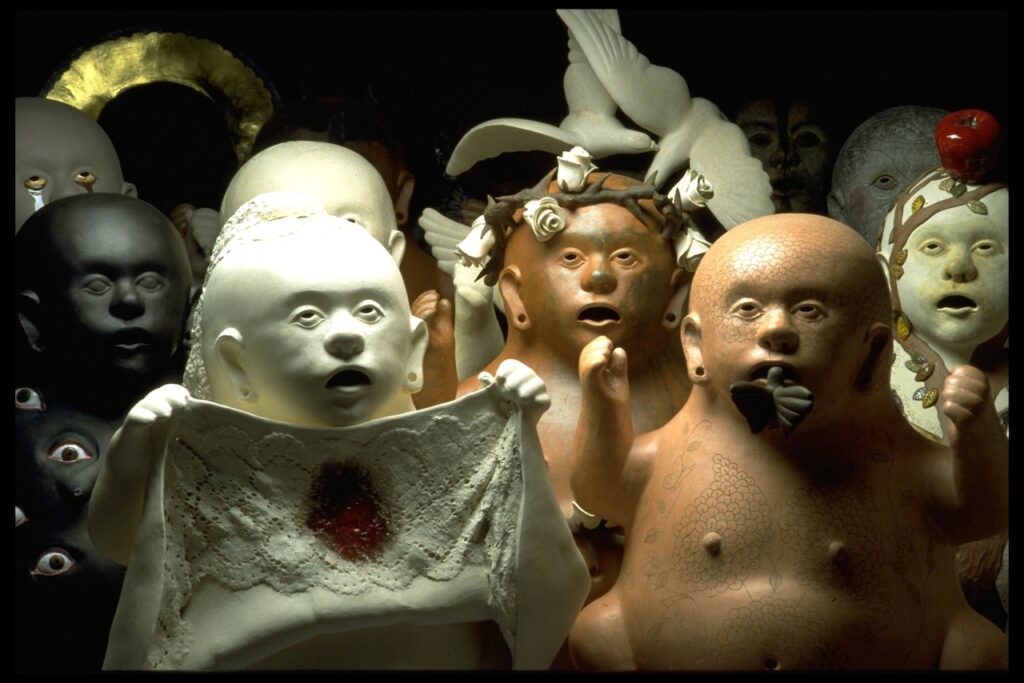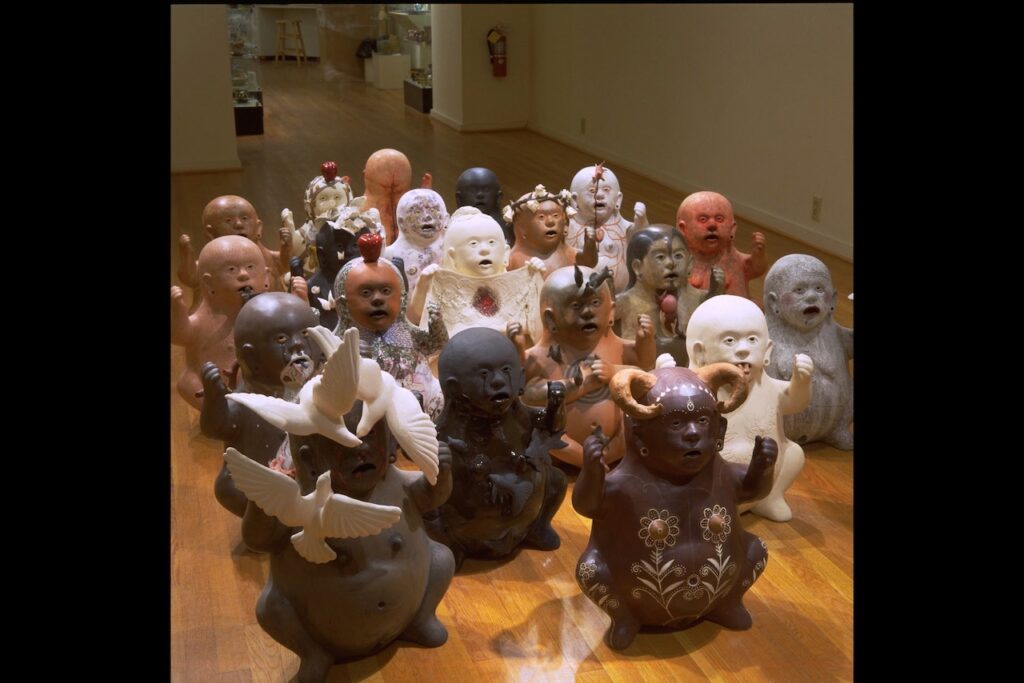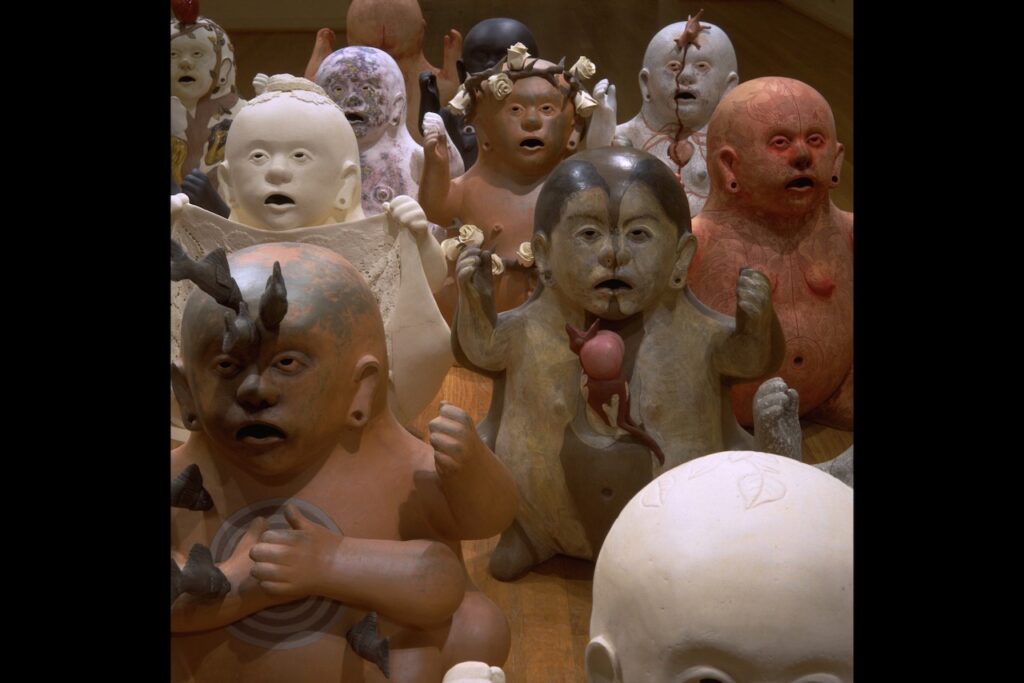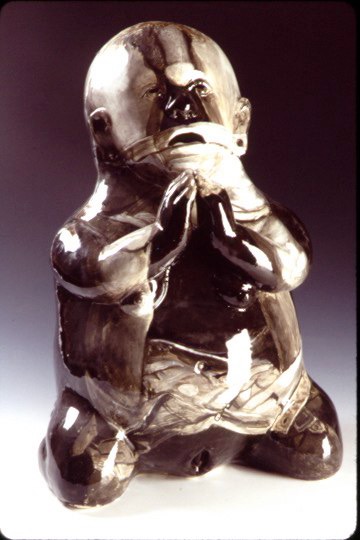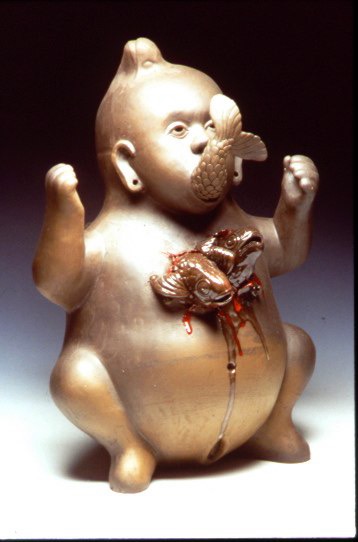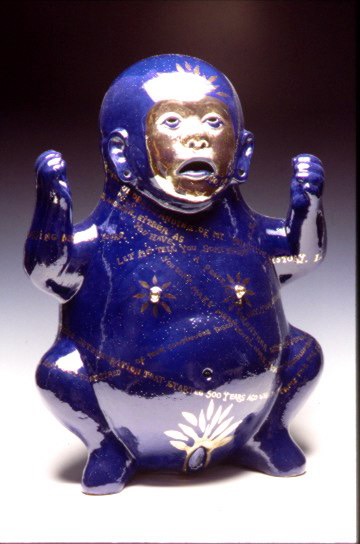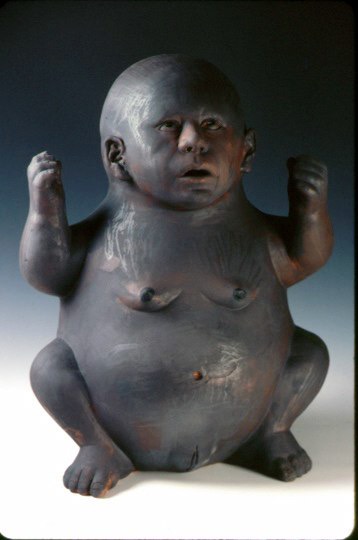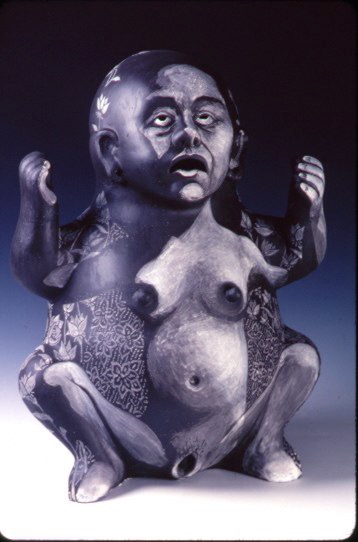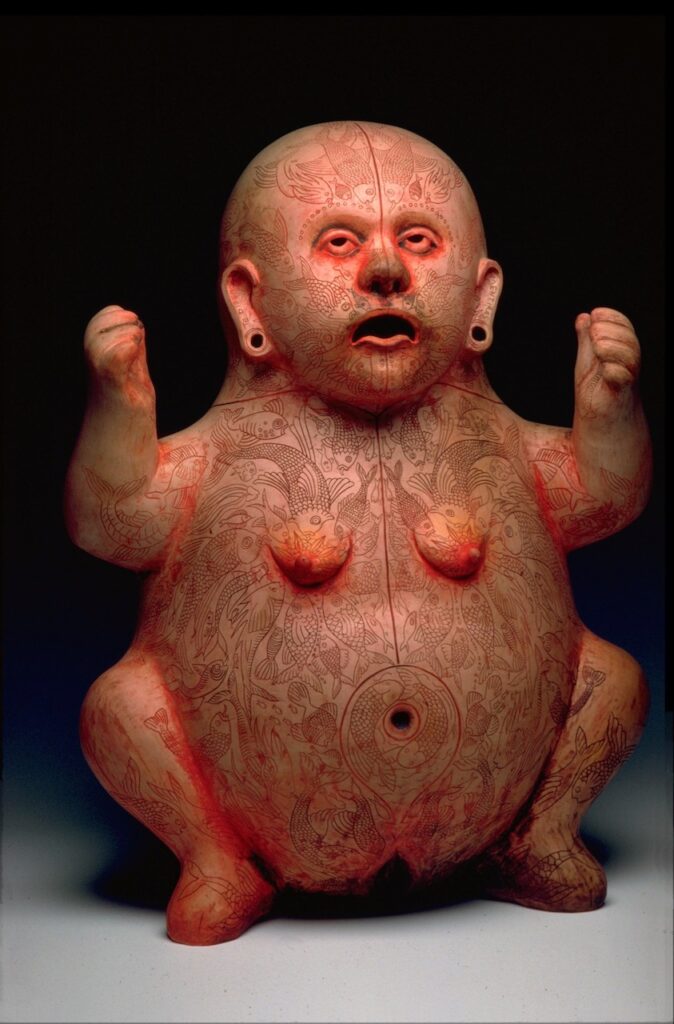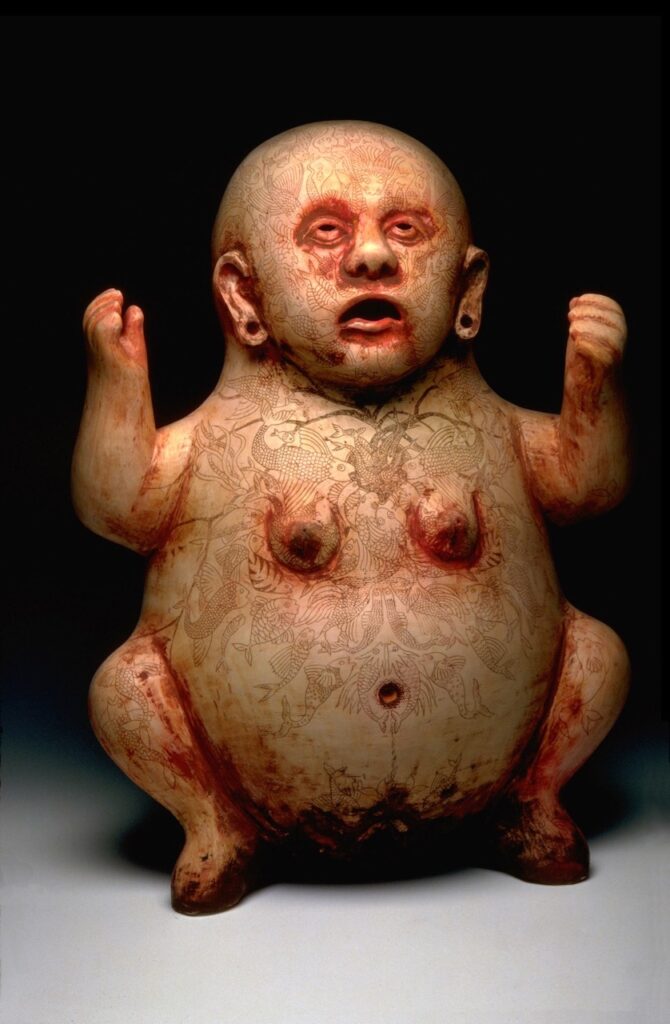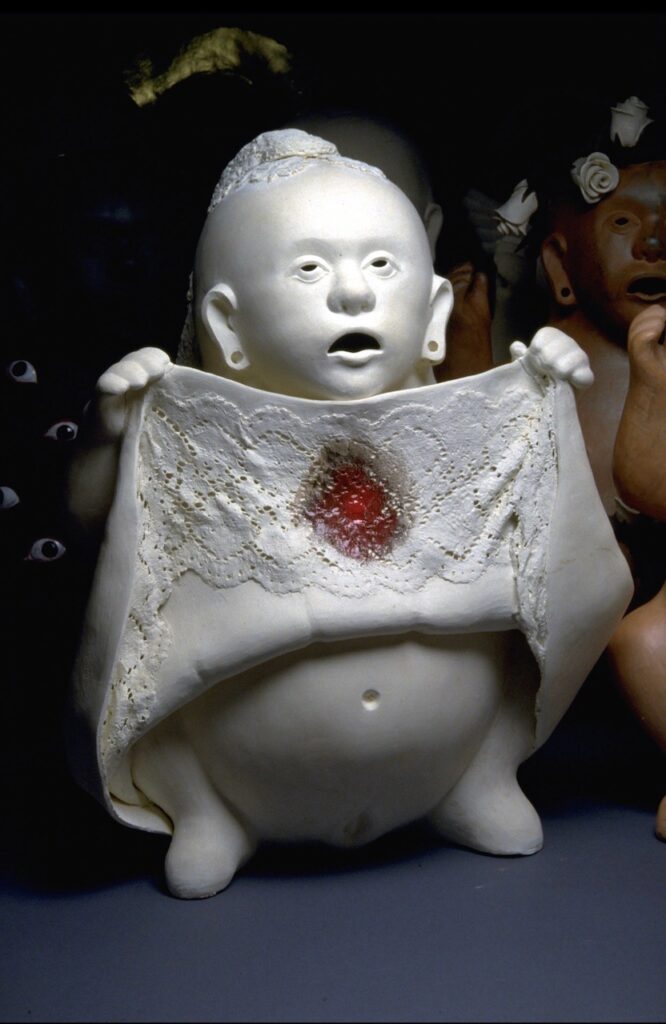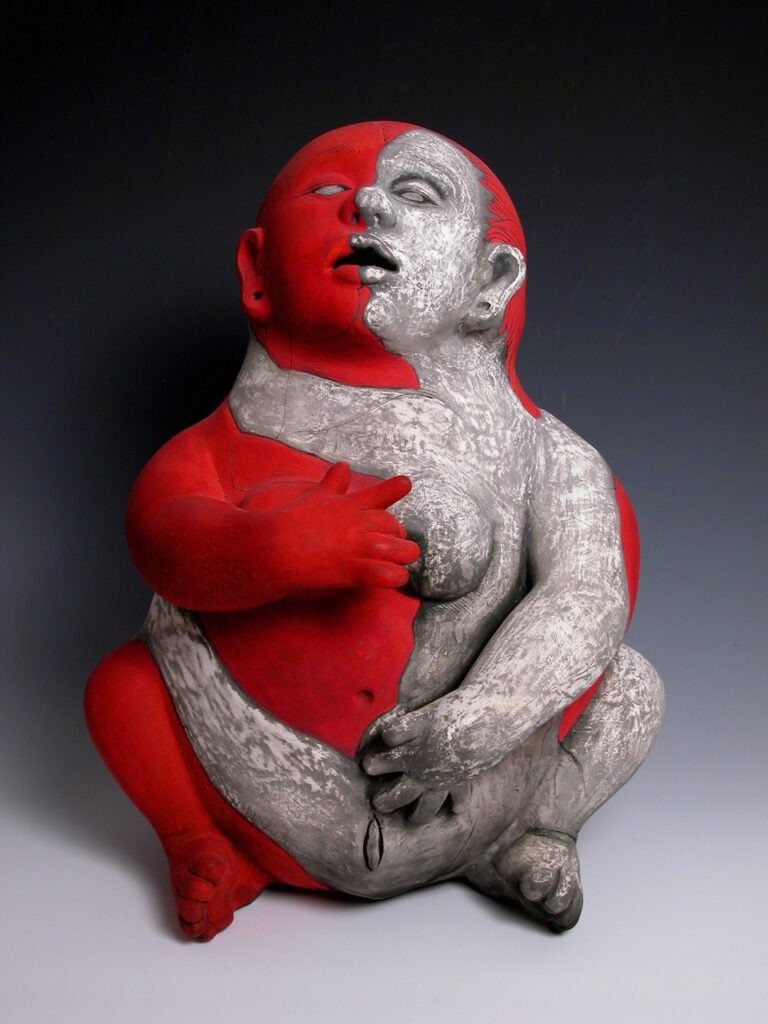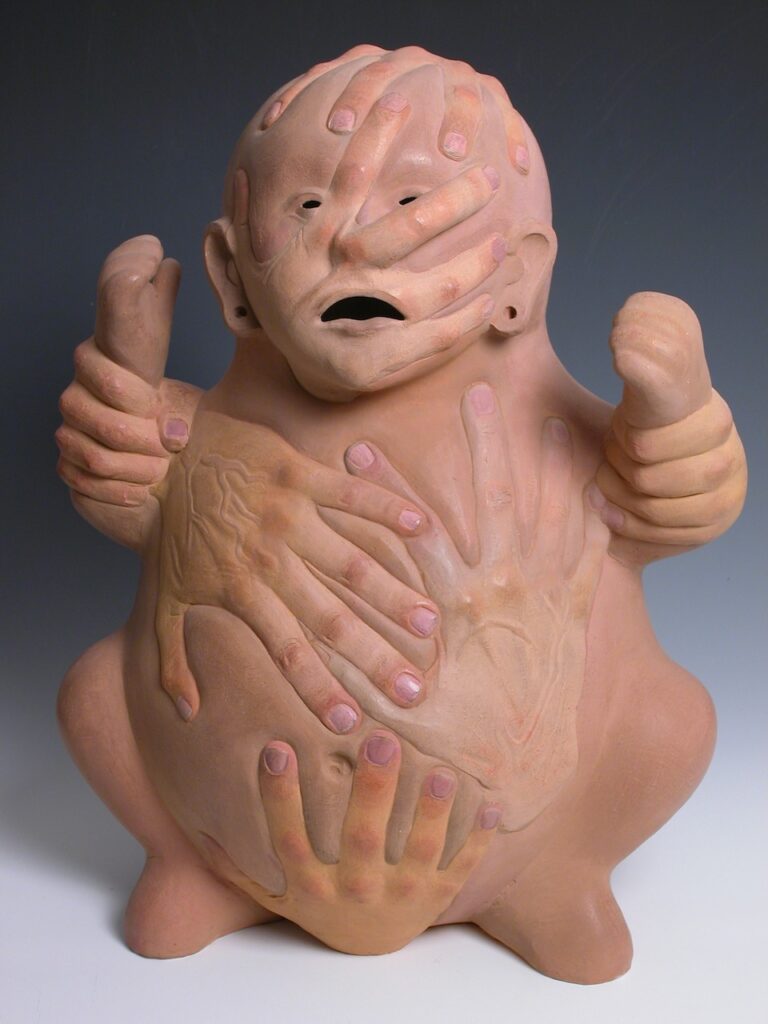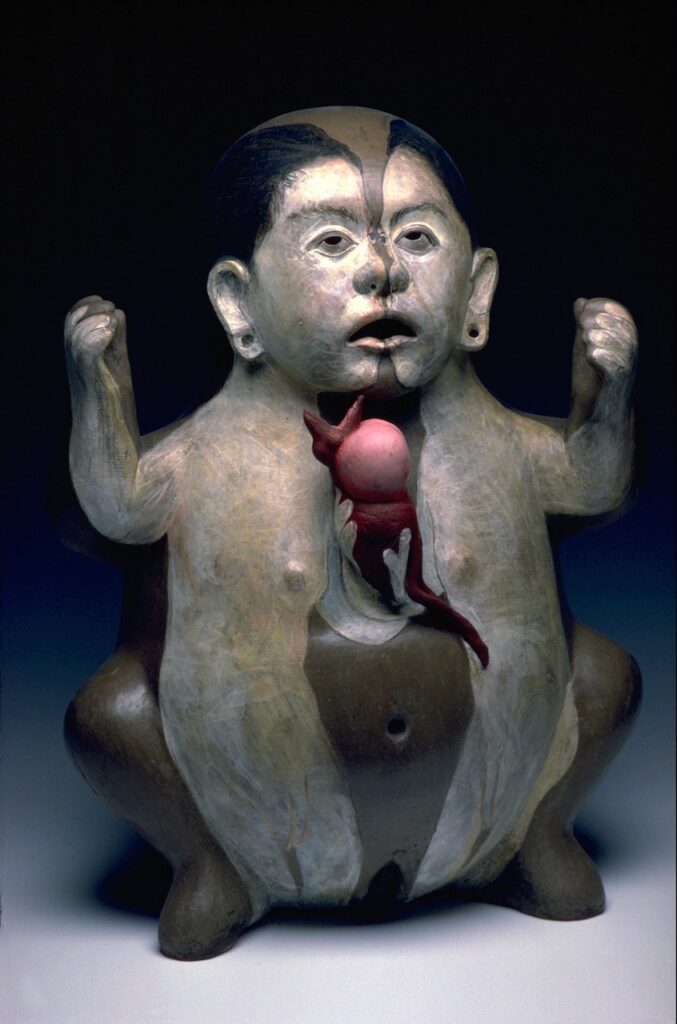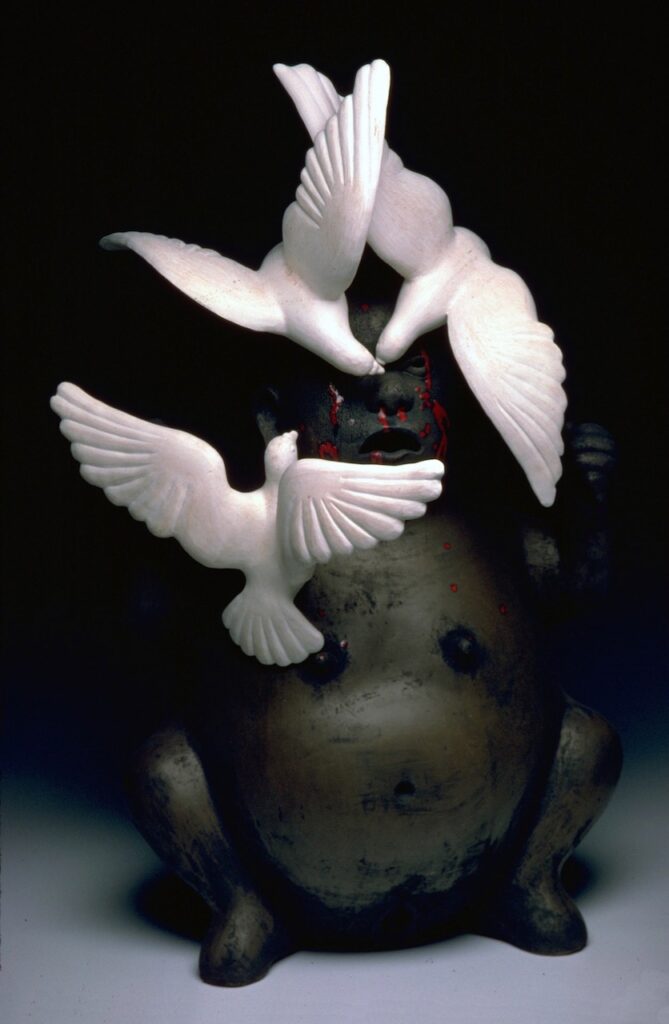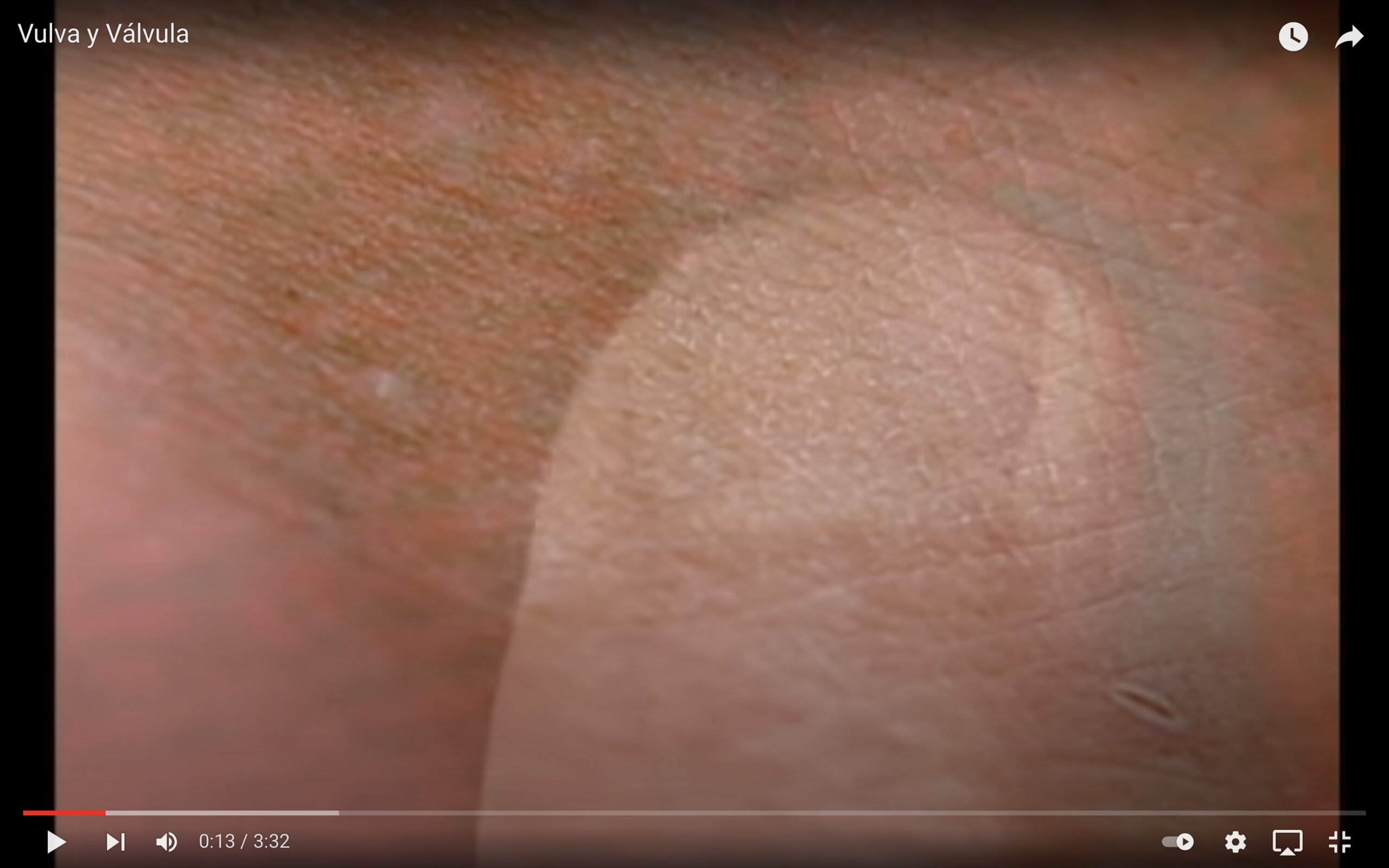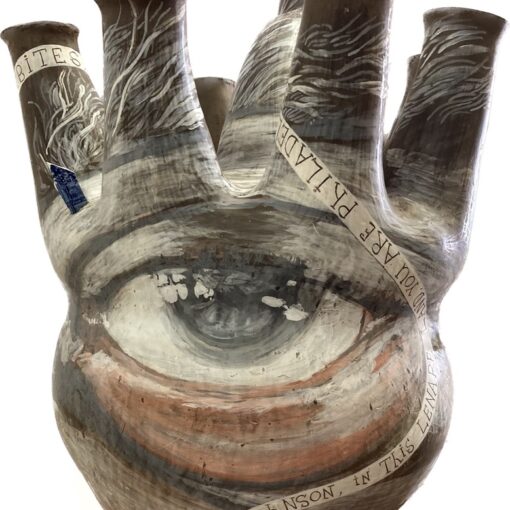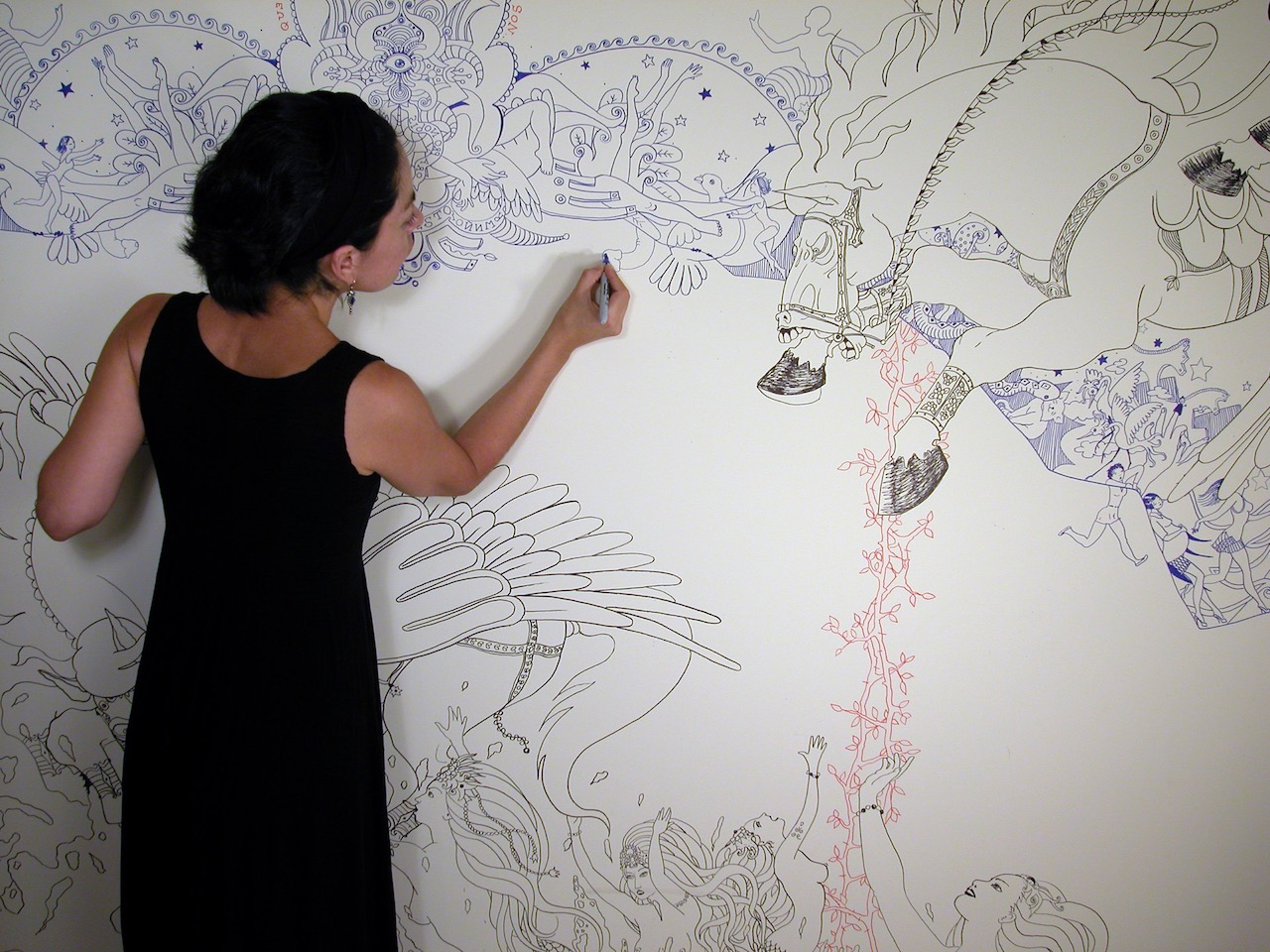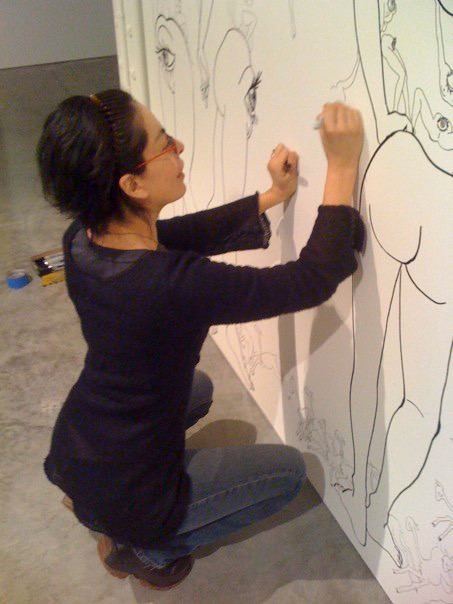Once upon at time there was this priest wildly in love with a woman who died. In his despair he procured a “vessel of death” for summoning herspirit, and loved her one more time. Manchaypuitu (male) and Isichapuitu (female). The “vessels of death” were basically human like vessels and were known to be powerful tools for bringing the spirits from the past.
Oral tradition, Cusco, Perú
I feel my body populated by memories, impressions, beliefs, fears and desires. They are imprinted deeply, almost etched. They follow me, tormenting me, or sweetening my path.
At this stage of my life I wanted to summon their presence, thank them for being, and make peace with each of them. But I didn’t know how, until I saw a photograph of a Mexican statue from the Rockefeller Collection at the Metropolitan Museum in New York.
The figure was two thousand years old and represented an obese male child with his arms up. Somebody made it two thousand years ago, and yet I believe, it looks like me.
It is said that every work of art is a self-portrait. I imagine the Huastecan artist modeling the clay, giving it his or her eyes, his or her full cheeks, his or her protruding upper jaw. I imagine him or her looking like me, and then, I imagine myself making the Huastecan piece two thousand years ago. I believe I am continuing something I began long ago. I am remaking it over and over, as if I don’t want to depart from it, as if it were possible to prolong the moment of creation and continue an eternal labor of love.
Isichapuitu is an installation of several versions of the same figure, but each responding to a very different need. Several voices with their own stories: my stories. They are different organs of a single body presented on the floor, next to each other, as a metaphor of wholeness. Because each of us, we are all sum of viscera and flesh, expectations and disappointments, memories and oblivion, generosities and pettiness. They go on the floor because I want them invading our realm. They go next to each other, because they were not created to be observed and qualified as objects. Their value lies not in my skills but in their mere existence. They exist, first for me, and then for everybody else. The Isichapuitu installation is an exorcism, but it is also a farewell, and a new beginning.
